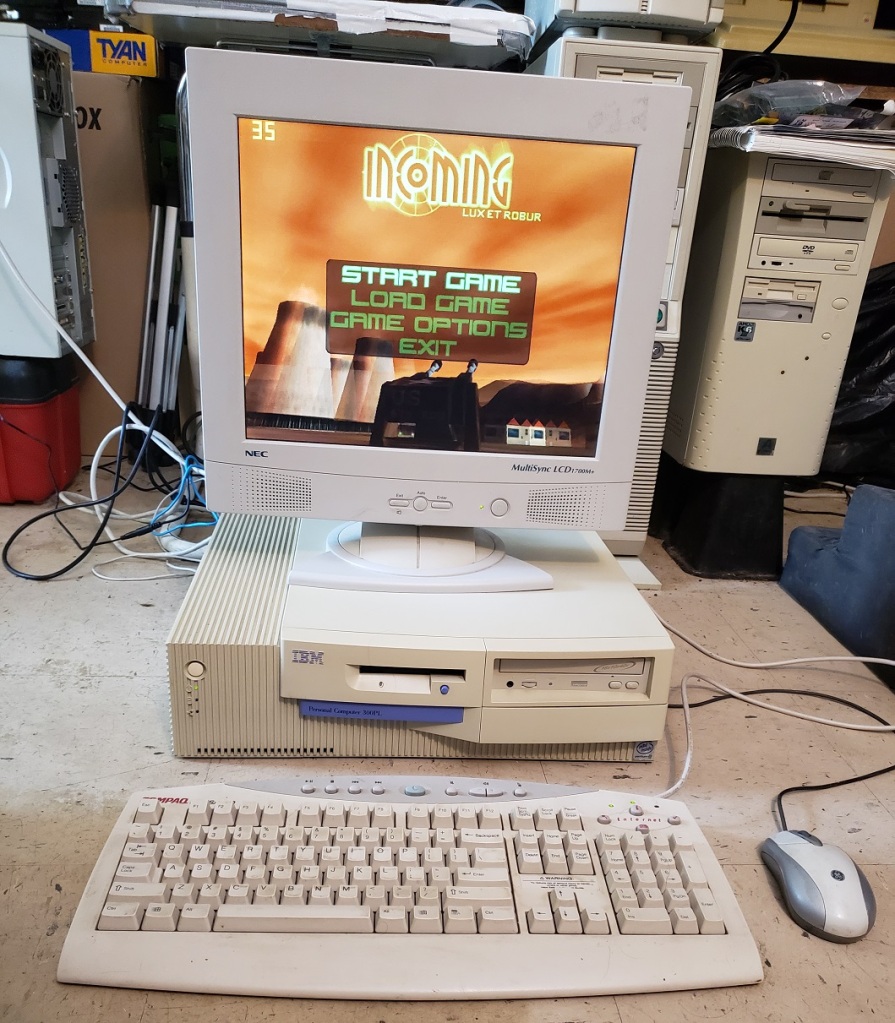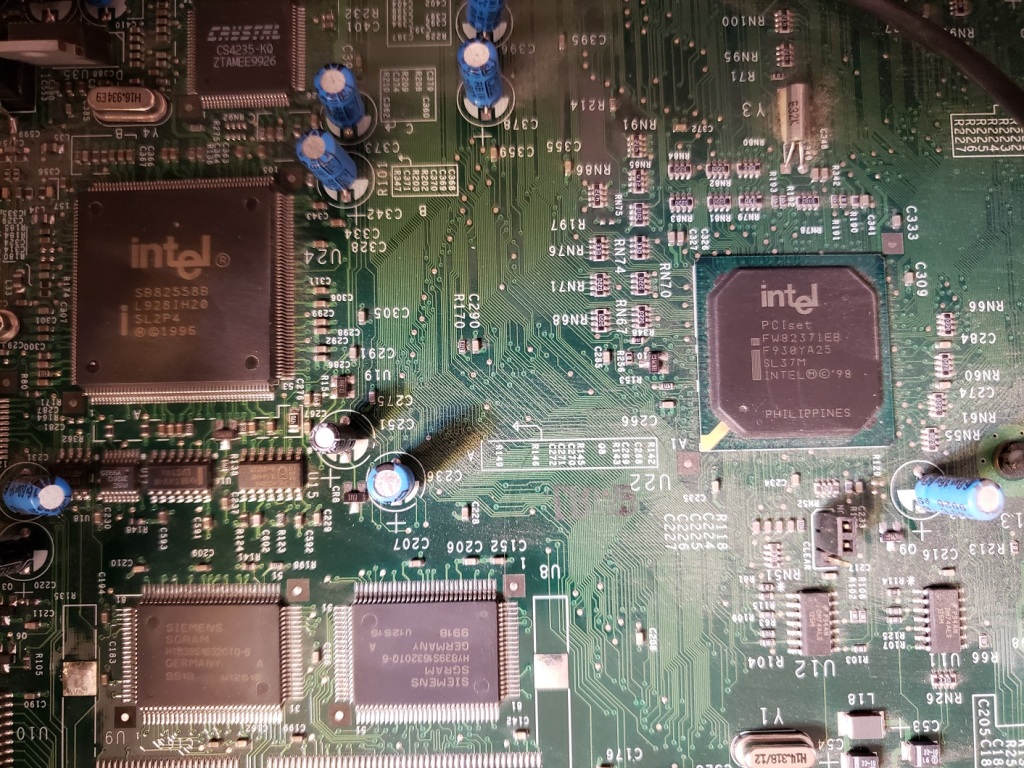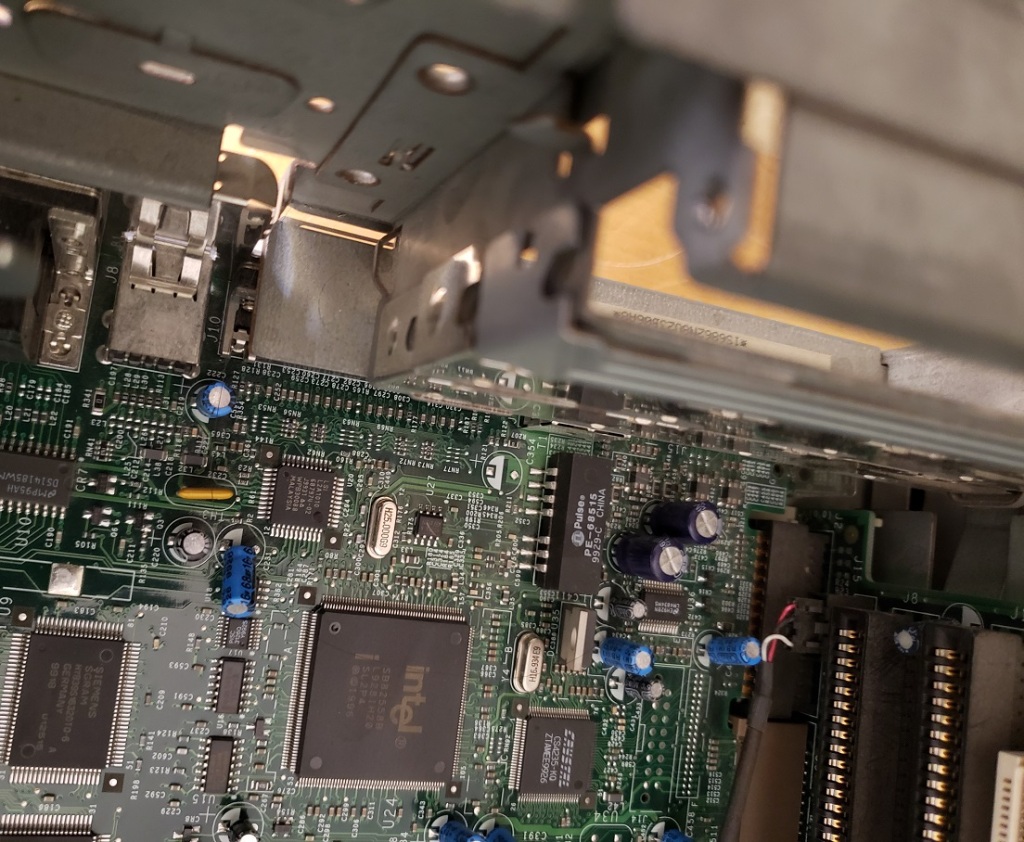Around four years ago I wrote an article on this blog about the very similar IBM 300PL Type 6562. I picked up this machine because I really liked the style of the case but it really wasn’t the model I was looking for. Finally, several years later I finally acquired my IBM 300PL 6862.
The case is more or less identical in style and size to the 6562 except it lacks the audio input/outputs and volume control under the floppy drive. On the left side of the case we have a large power button with three LED indicator lights underneath for power, HDD activity and network activity. Near the center of the case is a slot meant for a 1.44MB floppy drive. To the right side of the case we have 2 5 1/4 drive bays with one being occupied with a CD-ROM drive, though in this case it is not the original drive.

Turning the case around we can tell right away by the orientation of the four expansion slots that this machine uses a riser card. Starting under the expansion slots mid-case and moving right we have our various built in I/0 ports. First we have three audio jacks for the built in audio for a microphone, line in and finally line out. Next we have an Ethernet jack followed by a parallel port, dual USB 1.1 connectors, dual serial ports, two PS2 ports for mouse and keyboard and lastly a VGA connector for the built in video. Above the VGA port is another unusual cutaway. This is for the possible addition of an AGP card which we will take a look at once we are inside the case.
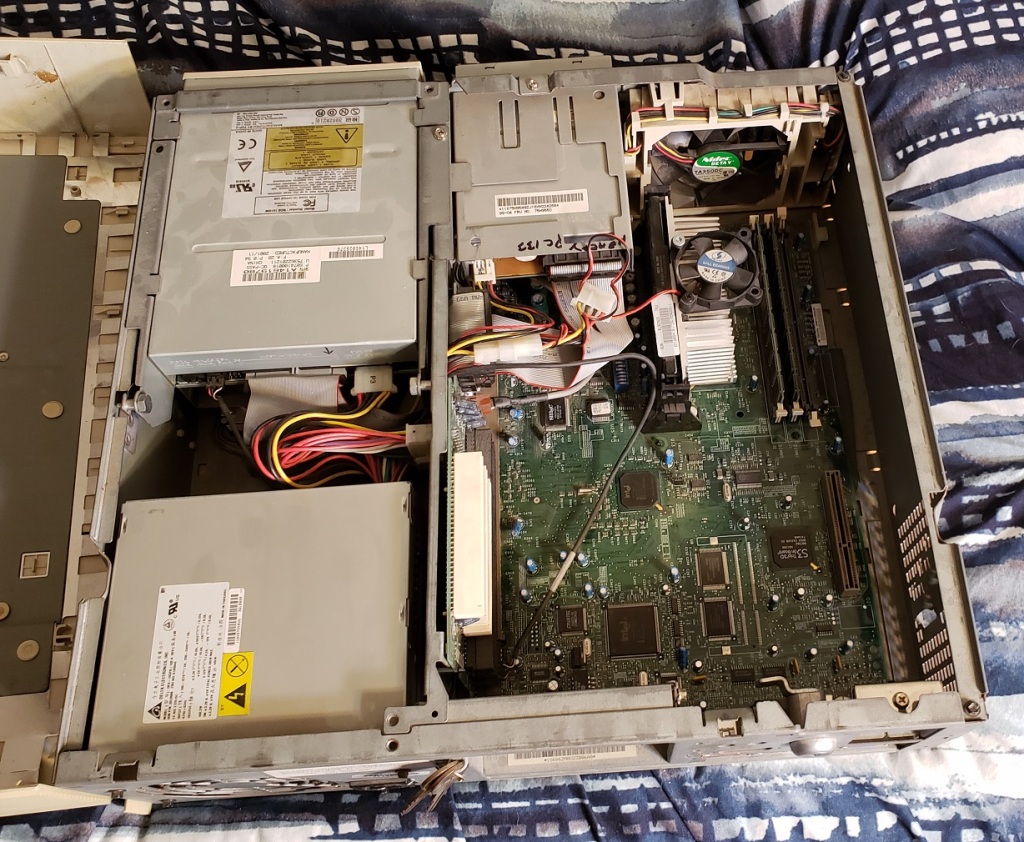
The case lid is pretty easy to remove and just requires lifting two tabs at the back of the case and pushing it forward and up. The IDE hard drive is mounted out of sight below the CD-ROM drive and below the second 5 1/4 bay.
Here is the handy data sticker found on the underside of the case cover though note that I found it wasn’t 100% accurate which we will talk about. This may be due to me updating the BIOS to the latest version.

And next lets take a better look at the motherboard.
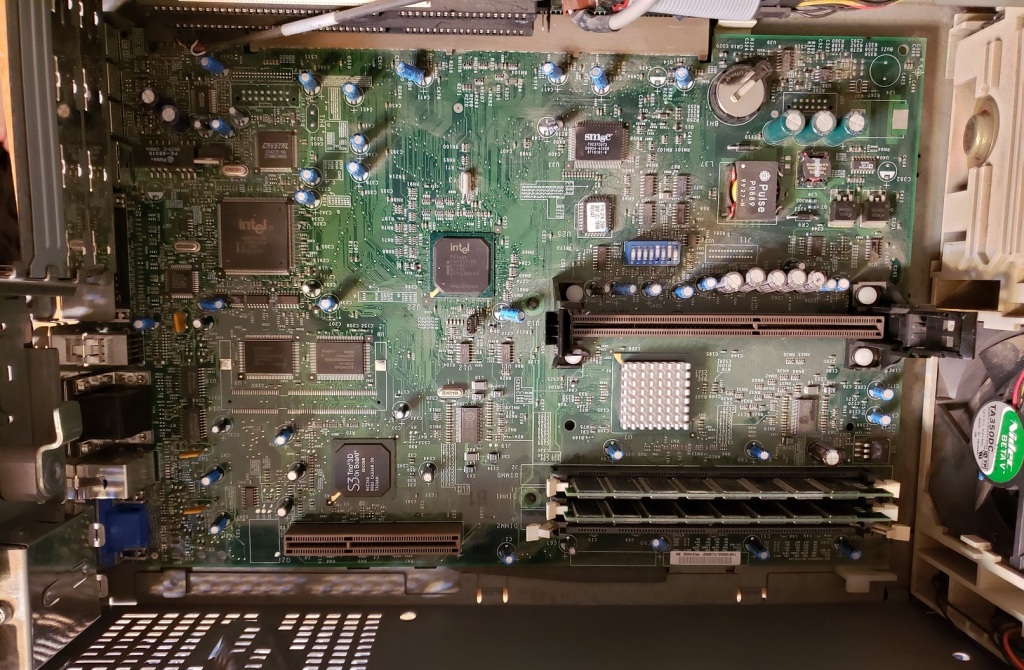

The motherboard is an NLX form factor board which some manufactures like IBM and Intel pushed in the late 90’s. It was meant to be a low profile, low cost motherboard form factor and had some odd quirks like the AGP port placement on this board which is located far from the other PCI and ISA slots and, for the most part, requires NLX form factor video cards. It’s a little hard to see in the images above but the motherboard connects to another brown colored edge connector located where the riser slot is located.
1 ) CPU – The Type 6862 motherboard uses a slot 1 socket and supports both Pentium II and III slot 1 CPU’s. My particular machine came with a 450MHz Pentium III, the lowest clocked Pentium III, and also had what I’m pretty sure a cooling fan added on by the previous owner.

The sticker on the underside of the case lid gives switch positions for installing a Pentium III up to 550MHz but with an update to the latest BIOS I was able to successfully upgrade the CPU to an 800MHz Pentium III and using a Power Leap adapter was even able to install a 1.3GHz Tualatin. A few things to note however is I found the switch settings useless when upgrading the CPU and when I changed them from what was the systems default I even ran into POST errors. I suspect this may be an issue caused by the BIOS update which changes how CPU speed is handled. I did however run into a separate POST error after changing CPU’s that I had to go into the BIOS advanced features menu and disable “CPU BIOS update”.
Also note that there are no power connectors on the main motherboard for the CPU fan but there is one on the riser board which can be used.

2 ) RAM – The Type 6862 officially takes up to 384MB of PC100 SDRAM. My machine was able to recognize 512MB with the BIOS update under Windows 98se. I am currently using two 256MB sticks of PC133 which work at PC100 speeds on this motherboard.

3 ) Video – The built in video chip is a S3 Trio 3D with 2MB of SGRAM. The Trio 3D is more or less the successor to the Virge line of 3D acceleration chips and like them it has great 2D compatibility with older DOS titles but 3D is somewhat lacking. For retro gaming I strongly suggest upgrading with an AGP card unless your strictly going to be playing 2D titles.

4 ) Sound – Sound is provided by a Crystal CS4235-KQ chip. I don’t have much experience with this chip but the datasheet indicates it is Sound Blaster, Soundblaster Pro and Windows sound system compatible though being a budget chip I wouldn’t be surprised if the FM synth was not up to par with a true Yamaha OPL chip. For general use in Windows it should suffice but if you want to use the 6862 for gaming I would advise disabling the built in sound and adding an ISA or PCI sound card depending on your needs.

5 ) As was mentioned earlier the Type 6862 uses a riser board like many Desktops. on this riser board we have various connectors such as the power connector for the CPU fan as well as three PCI and two 16-bit ISA slots. This should be more than enough for adding sound and video cards depending on your needs.

If you look below the riser you can also see the long brown slot the motherboard itself connects to.
When installing expansion cards each card does not get its own screw to hold it in place but the case used a metal bracket that unscrews and then screws back on to secure any added cards.

6 ) AGP slot – Unusually on this board the AGP slot is located far away from the riser card and the other PCI/ISA slots. On a technical level it does not make much if any difference though it can cause issues if you were hoping to run a certain setup such as using a Voodoo 1 or 2 or any card that requires some sort of cable connection to your primary video card.

The other issue this arrangement causes is that due to the special video backplate used you need an NLX compatible video card with its video connector high on the card. Usually, these cards also have a little square cut on on them on the lower half under the video connector.

Thankfully Diamond Multimedia made a large number of NLX compatible video cards and most late 90’s video chips can be found in this form factor such as the Voodoo3, TNT 1 and 2, Matrox G200, ATI Rage 128 and others. The most powerful card sold in the NLX form factor was the Geforce 256 SDR though they tend to sell for quite a large amount of cash these days.

I quite like the IBM 300PL Type 6862 and it’s quite versatile. You can easily install a low clocked Pentium II along with an ISA sound card and have a fast DOS rig. On the other hand, it also makes a great Windows 9x retro PC depending on your era of choice determined by your CPU and video/sound card choice. The ability to support everything from a Pentium II 233MHz all the way up to a 1.3GHz Tualatin via a power leap adapter makes this a very versatile retro PC.
The case is a bit large however and does take up quite a lot of desktop space. Other annoyances such as the odd arrangement of the AGP slot slightly limit your video card options but despite this the 6862 makes a great late 90’s retro PC.
